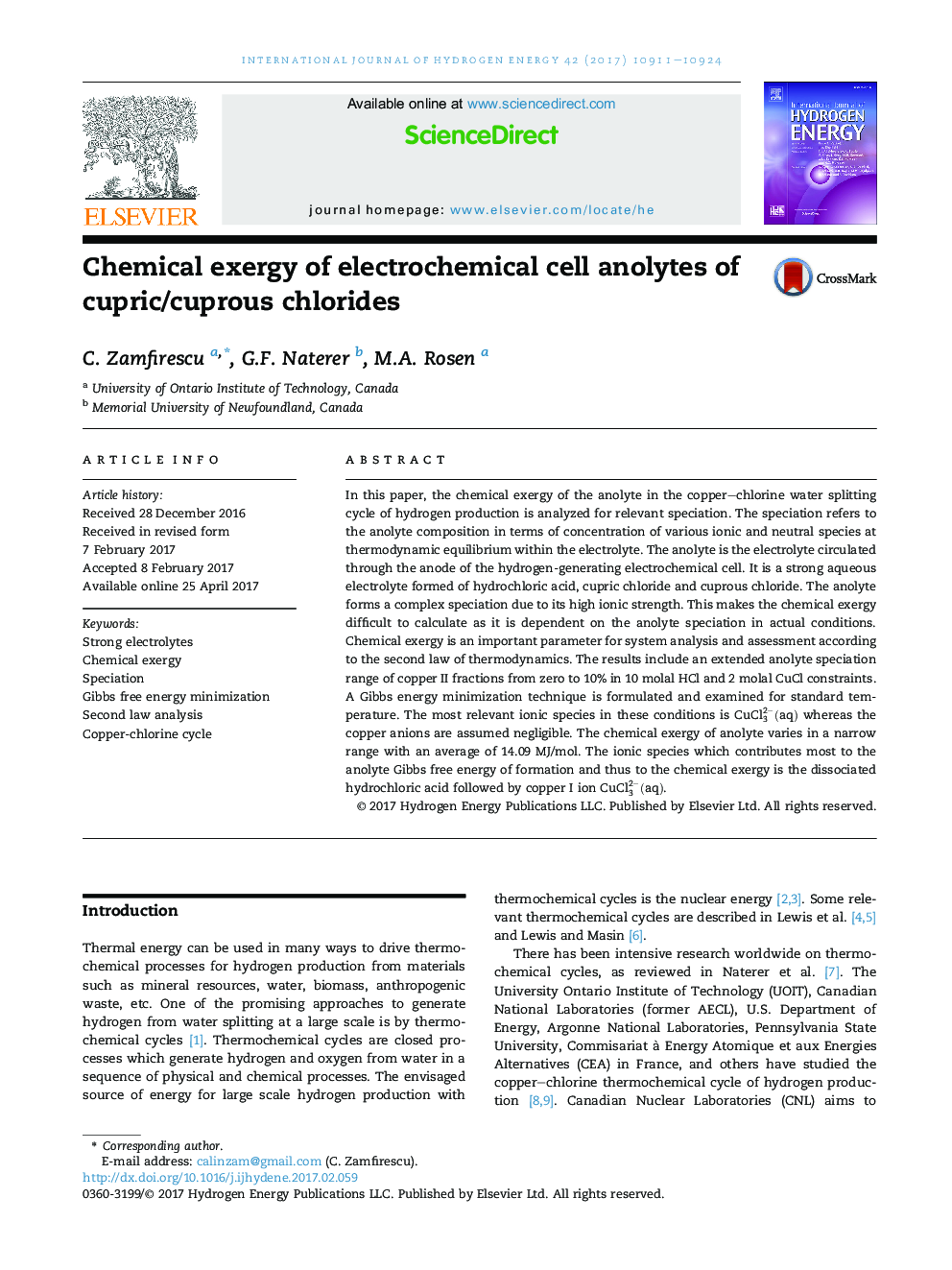| Article ID | Journal | Published Year | Pages | File Type |
|---|---|---|---|---|
| 5145698 | International Journal of Hydrogen Energy | 2017 | 14 Pages |
Abstract
In this paper, the chemical exergy of the anolyte in the copper-chlorine water splitting cycle of hydrogen production is analyzed for relevant speciation. The speciation refers to the anolyte composition in terms of concentration of various ionic and neutral species at thermodynamic equilibrium within the electrolyte. The anolyte is the electrolyte circulated through the anode of the hydrogen-generating electrochemical cell. It is a strong aqueous electrolyte formed of hydrochloric acid, cupric chloride and cuprous chloride. The anolyte forms a complex speciation due to its high ionic strength. This makes the chemical exergy difficult to calculate as it is dependent on the anolyte speciation in actual conditions. Chemical exergy is an important parameter for system analysis and assessment according to the second law of thermodynamics. The results include an extended anolyte speciation range of copper II fractions from zero to 10% in 10 molal HCl and 2 molal CuCl constraints. A Gibbs energy minimization technique is formulated and examined for standard temperature. The most relevant ionic species in these conditions is CuCl32â(aq) whereas the copper anions are assumed negligible. The chemical exergy of anolyte varies in a narrow range with an average of 14.09Â MJ/mol. The ionic species which contributes most to the anolyte Gibbs free energy of formation and thus to the chemical exergy is the dissociated hydrochloric acid followed by copper I ion CuCl32â(aq).
Keywords
Related Topics
Physical Sciences and Engineering
Chemistry
Electrochemistry
Authors
C. Zamfirescu, G.F. Naterer, M.A. Rosen,
